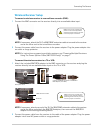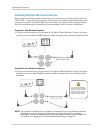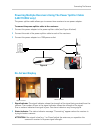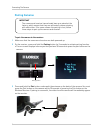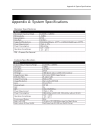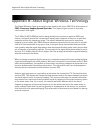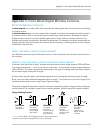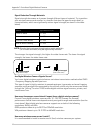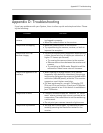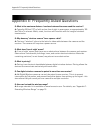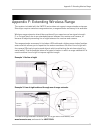
12
Appendix C: Facts About Digital Wireless Cameras
Signal Reduction Through Materials
Signal strength decreases as it passes through different types
of material. Try to position
your wireless camera and receiver in a location that does not pass through metal, or
concrete blocks, which can significantly reduce signal strength (as shown in the table
below).
The stronger the signal strength, the higher the
video
frame rate. The lower the signal
strength, the lower the video frame rate.
Are Digital Wireless Camera Signals Secure?
Yes. Lorex digital wireless products feature a wireless transmis
sion method called FHSS
–Frequency Hopping Spread Spectrum.
This type of signal is highly resistant to eavesdropping as
it generates a channel hopping
sequence using an algorithm generated by the receiver, which only the camera can follow
through the "pairing" function. FHSS makes digital wireless signals secure, private, and
interference free.
How many frames per second should I expect from a digital wireless camera?
Current Lorex digital wireless cameras offer 10 - 30
FPS (Frames Per Second)
performance. Actual frame rate depends mainly on signal strength and resolution (see the
chart above). Most digital wireless cameras support one or both of the following
resolutions: QVGA, and VGA.
QVGA produces video at up to 30 FPS at 320x240 resolution.
VGA produces video at up to 10-12 FPS at 640x480 resolution.
How many wireless cameras can I install?
It is recommended to install a maximum of 4 (four)
wireless cameras per
system.
Material Signal Reduction (%)
Plaster & Wood 10 - 30%
Brick 30 - 50%
Concrete Cinder Blocks 50 - 70%
Metal & Metal Cladding 70 - 90%
NOTE: Signals that must pass through wet or moist materials
(i.e. shrubs and trees) may be significantly reduced.
Full signal strength
(high frame rate)
Low signal strength
(low frame rate)




